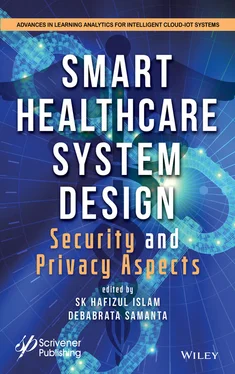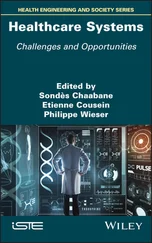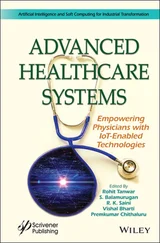Table 2.1 Very recent articles focusing on applications of fuzzy set theory in healthcare and medical problems.
| Author(s) |
Approach |
Purpose of the study |
Outcome |
| Part A: Selection of medical equipment, material, and technology |
| Moreno-Cabezali and Fernandez-Crehuet [24] |
Fuzzy logic in risk assessment. |
Survey to assess potential risks. |
Identified the most critical risk. |
| AlZu’bi et al . [25] |
3D fuzzyC-means algorithm. |
3D medical image segmentation. |
Parallel implementation to be 5× faster than the sequential version. |
| Ozsahin et al. [23] |
FuzzyPROMETHEE And fuzzy MCDM. |
Solid-state detectors in medical imaging |
Most suitable semiconductor on basis of detectors. |
| Masood et al . [22] |
Hybrid hierarchical fuzzy group decision making. |
Selection of conceptual loudspeaker prototype under sustainability issues. |
Optimal conceptual prototype design among 4 alternatives. |
| Part B: Service quality and risk assessment typically in chronic diseases |
| Vidhya and Shanmugalakshmi [29] |
Big Data and neuro fuzzy-based method |
Analysis of multiple diseases using an adaptive neuro-fuzzy inference system. |
Determined the entropy of the CFI count. |
| Akinnuwesi et al. [28] |
Hybridization of fuzzy-Logic and cognitive mapping techniques. |
Decision support system for diagnosing rheumatic–musculoskeletal disease. |
87% accuracy, 90% sensitivity, and 80% specificity. |
| La Fata et al. [26] |
Fuzzy ELECTRE III. |
Evaluated the service quality in public healthcare. |
Significant service attributes factors. |
| Samiei et al. [27] |
Neuro-fuzzy inference system. |
Risk factors of low back pain. |
Identified four major risk factors to low back pain. |
| Part C: Decision making and the role of operations research |
| Vaishnavi and Suresh [30] |
Fuzzy readiness and performance importance indices. |
To implement agility in healthcare systems. |
Continuation of assessment readiness helps to improve readiness. |
| Detcharat Sumrit [31] |
Fuzzy MCDM approach. |
Supplier selection for vendor-managed inventory in healthcare. |
Institutional trust, information sharing, and technology as major evaluation criteria. |
| Rajput et al. [33] |
Fuzzy signed distance technique. |
Optimization of fuzzy EOQ model in healthcare industries. |
Determined optimal total cost under variable demand. |
| Salazar and Sanz-Calcedo [32] |
cognitive mappings. |
operations on energy consumption and emissions in healthcare centers. |
connection to energy, environmental efficiency, and maintenance condition. |
B. Service Quality and Risk Assessment, Typically in Chronic Diseases The world’s population is aging. The proportion of the elderly (+65) is greater than ever and is estimated to be double within the European Union within the next 50 years [13]. Whereas the improvements to the quality of life and advances in medical science in the last few decades craft the aging of the population, a higher ratio of the aged population makes it necessary for caregivers to concurrently tackle with more patients suffering from a variety of chronic diseases. This way, the upholding of quality service by assessing the risk turns to be more and more challenging for caregivers.
An empirical case study [9] was conducted with data from nine public hospitals in Silica, Italy, on four core quality parameters and fifteen main service items. He introduced a new fuzzy measurement method for assessing the quality of service in healthcare. To elicit accurate estimates of service quality requirements, the fuzzy AHP approach was used. He found that successful internal communication of service quality accomplishments should minimize the differences between the needs of customers and how workers view those needs. The authors [10] presented several of the shortcomings of several existing algorithms in the form of an enormous number of rules and the mining of non-interesting rules, along with the time of pre-processing and the rate of filtration. Then to address the limitations based on the user request and the visualization of discovered rules, they provided a fuzzy weighted-iterative concept.
Again, [11] provided under an interval-assessed intuitionistic fuzzy environment a hybrid MCDM model and thereby evaluated the probability of node failure. They combined the interval-valued intuitionistic fuzzy ANP (for matching with the uncertainty of information) and the proportional assessment approach (for decision making). However, the subjective weight used in their method relied much on caregivers’ opinions and thus was not flawless. Besides, due to the complexities of systems and service, there could arise different kinds of interrelationships between the failure modes. However, this was dodged in this study. Around the same time, [12] presented a decision-making approach that predicted heart failure risk. They integrated the fuzzy AHP and fuzzy ANN in the suggested approach. Also, they could establish that their method had 91.10% accuracy in results in comparison with other conventional ANN models Table 2.2.
Recently, [14] identified several drawbacks of the highly popular gerontechnology and telerehabilitation systems, such as the failure of those systems to assist patients and experts, both, regarding the progress of rehabilitation. They proposed a fuzzy-semantic framework based on well-known assessment criteria to determine the physical state of the patient during the recovery process. They used an API, however, called the Kinect API, which was a closed source API and only usable for Kinect interface patients. This made it less valuable for the process. There were also ample scopes for therapists and patients, alike, to determine their operation. Again the emphasis on privacy issues is one main factor in the acceptability of any technology or system. The study [15] focused on the safety assurance of an elbow and wrist rehabilitation medical robotic device in terms of robot and patient safety. Using the fuzzy logic method that discovered the degree of protection during the use of the robotic system, data uncertainty was discussed. However, their procedure was only tested numerically in a group of 18 patients through a clinical trial.
Table 2.2 Abbreviations with descriptions.
| Abbreviation |
Description |
| VIKOR |
Vlsekriterijumska Optimizacija I Kompromisno Resenje |
| AHP |
Analytic Hierarchy Process |
| ANP |
Analytic Network Process |
| MCDM |
Multi-Criteria Decision Making |
The very latest papers focusing on this area are included in Part B of Table 2.1.
C. Decision Making and the Role of Operations Research The majority of researchers focusing on applications of fuzzy set theory in healthcare and medical problems used some existing decision-making processes or derived new ones. They found that the decisions of caregivers primarily aim to lower the health risk of patients while maximizing the health benefits and patients’ choice, thereby increasing the satisfaction of all parties. However, there involved numerous criteria, such as social, environmental, material, managerial, professional, and many more criteria, in the wider setting of medical and healthcare models [17]. Since the crisp decision-making methods under several qualitative and quantitative contradictory issues strived to avoid the complexities with tolerance to doubts and stakeholders’ favoritism, the fuzzy set theory was employed to represent the inherent impreciseness of data and thus to present an efficient, rational and explicit decision process [21].
Читать дальше












